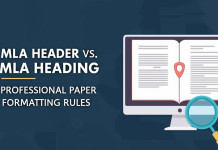Converting Excel files to PDF format is a smart move for businesses aiming to streamline operations, enhance document security, and reduce costs. This process offers numerous advantages, such as improved data integrity, better accessibility, and simplified sharing.
This blog will explore how converting Excel files to PDF can save your business both time and money, providing clear insights and practical examples.
Key Takeaways
- Converting Excel to PDF enhances data integrity and security by preventing unauthorized changes and ensuring consistency.
- PDFs improve document accessibility, allowing easy sharing across devices without compatibility issues.
- The conversion process streamlines archiving, reducing clutter and simplifying the retrieval of important documents.
- Switching to PDF reduces software costs, eliminating the need for multiple Excel licenses and ongoing updates.
- Overall, converting Excel to PDF boosts professionalism and communication, ensuring documents maintain their intended format.
Table of Contents
- Enhanced Data Integrity and Security
- Improved Document Accessibility and Sharing
- Streamlined Archiving and Record Keeping
- Reduced Software Costs and Maintenance
- Enhanced Professionalism and Presentation
- Improved Workflow Efficiency
- Practical Examples and Case Studies
- Simplified Data Verification and Auditing
- Conclusion
Enhanced Data Integrity and Security
Excel spreadsheets are dynamic and flexible, making them an excellent tool for data management. However, their very nature can also lead to unintended alterations. Converting Excel files to PDF ensures the data remains intact and unaltered once it is shared or stored. PDFs are inherently more secure than Excel files due to their fixed format and the availability of encryption options. This level of security is critical for sensitive business documents.
Here is the comparison of data security features.
| Feature | Excel | |
|---|---|---|
| Editable | Yes | No |
| Password Protection | Yes | Yes |
| Encryption | Basic | Advanced |
| Fixed Format | No | Yes |
| Digital Signatures | Limited | Comprehensive |
By converting Excel files to PDF, businesses can ensure that their data remains consistent and secure, reducing the risk of errors and unauthorized modifications. This reliability is especially important for financial reports, contracts, and other critical documents.
Improved Document Accessibility and Sharing
Sharing Excel files can sometimes be problematic, especially if the recipient does not have the same version of Excel or if the file contains complex formulas and macros. Converting these files to PDF eliminates these issues, as PDFs can be opened on almost any device and operating system without compatibility concerns.
Here are the insights on document accessibility and sharing.
| Aspect | Excel Files | PDF Files |
|---|---|---|
| Compatibility | Version-dependent | Universal |
| File Size | Can be large due to data and macros | Typically smaller and optimized |
| Viewing Consistency | Can vary based on settings | Consistent across all platforms |
| Sharing Ease | Potential issues with large files | Easy to share via email or cloud |
| Printing | May require adjustments | Print-ready |
By using PDF, businesses can streamline their document distribution process, ensuring that all recipients can easily view and print the documents without needing to adjust settings or deal with compatibility issues.
Streamlined Archiving and Record Keeping
Maintaining organized and accessible records is crucial for any business. Excel files, with their multiple sheets and data points, can become cumbersome when archived. PDFs, on the other hand, are easier to manage and search through, thanks to their fixed layout and document structure.
Converting Excel files to PDF simplifies the archiving process, making it easier to categorize and retrieve documents when needed. This is particularly beneficial for regulatory compliance, where maintaining accurate and accessible records is mandatory.
Reduced Software Costs and Maintenance
Relying solely on Excel for data management can be costly, particularly for businesses that need multiple licenses for their employees. Converting files to PDF reduces the dependency on Excel, as the documents can be viewed and shared without the need for expensive software.
Moreover, PDFs do not require regular updates and maintenance like Excel files do. This reduction in software dependency can lead to significant cost savings over time, as businesses can allocate resources more efficiently and reduce their overall IT expenses.
Enhanced Professionalism and Presentation
Presenting data in a professional and polished manner is essential for business communication. PDFs offer a clean and consistent format that is ideal for presentations, reports, and client communications. The fixed layout ensures that the document looks the same on all devices, maintaining the integrity of the original design.
Additionally, PDFs can be easily annotated and commented on using a PDF editor, making them an excellent tool for collaborative work. Stakeholders can provide feedback directly on the document, streamlining the review and approval process.
Improved Workflow Efficiency
Converting Excel files to PDFs using Excel to PDF converter software can significantly enhance workflow efficiency. PDFs are easier to handle, share, and store, reducing the time spent on managing documents. This efficiency translates into tangible time savings for employees, allowing them to focus on more critical tasks.
Steps to convert Excel to PDF.
- Open the Excel file: Start by opening the Excel file you wish to convert.
- Select the ‘File’ menu: Navigate to the ‘File’ menu and choose ‘Save As’.
- Choose PDF format: Select ‘PDF’ from the list of available formats.
- Adjust settings: Configure any necessary settings, such as page range or orientation.
- Save the file: Click ‘Save’ to complete the conversion process.
By incorporating this simple process into your workflow, you can ensure that your documents are consistently formatted and easy to manage.
Practical Examples and Case Studies
Financial Reporting
A mid-sized accounting firm used to spend countless hours preparing and sharing financial reports in Excel. Each report required meticulous formatting and careful handling to ensure the accuracy of the data. After switching to PDF, the firm noticed a significant reduction in time spent on report preparation and distribution. The fixed format of PDFs ensured that all reports were uniform and error-free, enhancing the firm’s professionalism and client satisfaction.
Legal Documents
A law firm faced challenges in managing contracts and legal documents due to the editable nature of Excel files. By converting these documents to PDF, the firm was able to secure the contents and ensure that all parties received the same version of the document. This change not only improved document security but also streamlined the review process, as clients could easily annotate and sign PDFs digitally.
Project Management
A project management company dealt with complex sheets containing project timelines, budgets, and resource allocations. These sheets were often shared with stakeholders, leading to version control issues and miscommunication. By converting these Excel files to PDF, the company was able to present a consistent view of the project data to all stakeholders, reducing confusion and enhancing collaboration.
Simplified Data Verification and Auditing
Data verification and auditing are critical processes in any business, ensuring accuracy and compliance with regulatory standards. Excel files, with their editable nature, pose challenges in maintaining consistent and verifiable records. Converting these files to PDF simplifies the data verification and auditing process.
Maintaining Data Consistency
When data is locked in a PDF format, it prevents unauthorized changes, preserving the original data. This consistency is crucial for auditing purposes, as it ensures that the records reviewed are exactly as they were at the time of their creation or last authorized update. Auditors can rely on the integrity of the data without worrying about potential tampering or accidental modifications.
Facilitating Audits
PDFs are easier to search and organize, making the audit process more efficient. Auditors can quickly locate specific data points or sections within a document without sifting through multiple sheets and tabs. Additionally, the ability to annotate and comment directly on the PDF files allows auditors to document their findings and notes in a structured and clear manner.
Example Scenario
Consider a retail company undergoing an annual financial audit. The finance team converts all its Excel-based financial statements and reports to PDF before the audit. This conversion ensures that the auditors receive uniform, non-editable documents, speeding up the verification process and reducing the time spent on resolving discrepancies.
In summary, converting Excel files to PDF not only simplifies data verification and auditing but also enhances the reliability and efficiency of these critical processes.
Conclusion
Converting Excel files to PDF offers numerous benefits for businesses, including enhanced data integrity, improved accessibility, streamlined archiving, reduced software costs, and increased professionalism. By adopting this practice, businesses can save time, reduce costs, and improve overall efficiency. Whether for financial reporting, legal documentation, or project management, the advantages of using PDF over Excel are clear and substantial.
Incorporating PDF conversion into your business processes is a strategic move that can lead to significant long-term gains. By ensuring that your documents are secure, accessible, and professionally presented, you can enhance your business operations and set yourself up for success.











